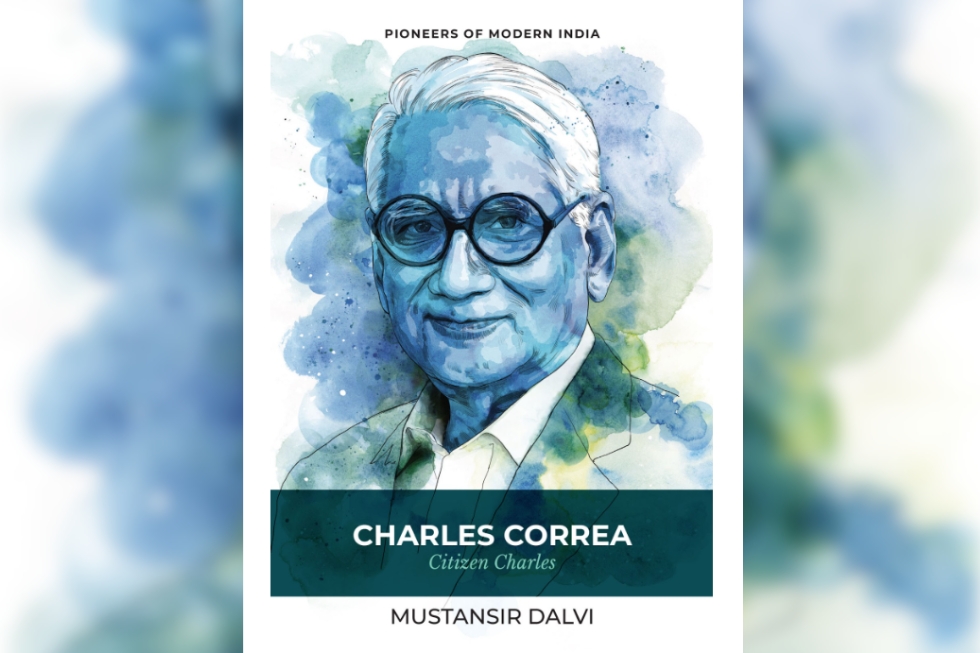In 1956, a national architecture competition was floated by the New Delhi Public Works Department for a memorial for Mahatma Gandhi. At the time, Habib Rahman was the chief architect of the PWD. The site for this memorial, along the Yamuna River on the Ring Road in New Delhi, was where the Mahatma was cremated. A competition was floated to seek a design for the samadhi, named ‘Rajghat,’ where visitors would pay their respects to the Father of the Nation.
Among the many entries that poured in were two from the firm of G. M. Bhuta Associates – one by Vanu Bhuta, and the other by Charles Correa. Bhuta’s design was a landscape inspired project where the site of the memorial was centred in a sunken plaza, square in shape, which in turn had a simple square granite faced plinth at its centre and an eternal flame. The Mahatma’s last words ‘Hey Ram’ were carved on the plinth. This frugal design represented peace and simplicity, both ideals that the Mahatma strove for. Correa’s design integrated the site into a landscaped whole with an elevated cube along the axis of the samadhi. Jawaharlal Nehru, along with Rahman and Kasturbhai Lalbhai, an industrialist, philanthropist, and Gandhian, eventually chose Bhuta’s design for Rajghat.
Correa’s design would be the first of several that he would do as memorials for Mahatma Gandhi including the Gandhi Smarak Sangrahalaya (1963), the Kasturba Gandhi Samadhi, Pune (1965) and the Gandhi Darshan at Rajghat (1969). These early designs set the stage for Correa’s architectural practice, where, unlike his contemporaries, Correa modulated his modernist training with the more ‘Gandhian’ principles of frugality, simplicity and a concern for resources. His method of pitting the expressionism of an international style with the sensibilities of the end user were always visible in his architectural choices.
Correa’s design for the Rajghat had caught the eye of Kasturbhai Lalbhai, Chairman of the Mahatma Gandhi Memorial Fund. Lalbhai had worked closely with the Mahatma during the swadeshi movement. The philanthropist appreciated Correa’s design vision, and when the project for creating a Gandhi Memorial Library in Ahmedabad was mooted, Lalbhai turned to Correa for a design. With this commission in hand, and, with the active encouragement of his friend Vanu Bhuta, Correa left the firm of G. M. Bhuta.
On the 1st of June 1958, Charles Correa set up his independent practice, in the modest space of his aunt’s garage! Charles Correa Associates began on the ground floor of Clarke House, on Wodehouse Road in Bombay, not far from the Gateway of India and the Regal Cinema. This was for a short while, before he moved to the Thomas Cook Building on Dadabhai Naoroji Road for a couple of years, and then, to the ornately neo-Classical Erucshaw Building at 249 Dadabhai Naoroji Road, where his architectural practice would continue until the late 1970s.
Correa’s earliest completed works which brought his architecture into prominence were industrial exhibition spaces like the Handloom Pavilion at Pragati Maidan (1958) and the Hindustan Lever Pavilion, Delhi (1961). The Handloom Pavilion was the first project fully realised by Correa in his independent practice. Here, he explored the homegrown by creating a series of spaces using mud and brick, and providing a roof of wooden umbrella-like enclosures on a grid, covered with handloom and Ikat cloth. This brought a suffused light into the pavilion which enhanced the visitor’s experience. The Lever Pavilion took ideas from the Handloom Pavilion further. Correa designed this industrial display space using reinforced cement concrete (RCC) plates. The continuous interior created synergies with Delhi’s climate, forcing convection air-currents through roof funnels, or ‘cannons’ which brought the breeze into the exhibition spaces.
The Handloom Pavilion was a significant milestone in Charles’ life on a personal as well as a professional front. This commission led to yet another commission for the young architect, this time to design the interiors of the Handloom House in Bombay, not long after his work on the Handloom Pavilion. For microbiologist and teacher, Monika Sequeira, the Handloom House had become a regular haunt, for the sarees and other weaves from textile craftsmen all over the country, on display here. She also loved the place for its interior design. In September 1960, Monika met Charles at a mutual friend’s birthday party. She realised that Charles was, in fact, the designer of the Handloom House’s interiors, which she had liked so much. Brought together by their love of innovative design, Monika and Charles were married in 1961.
[Niyogi Books has given Fair Observer permission to publish this excerpt from Charles Correa: Citizen Charles, Mustansir Dalvi, Niyogi Books, 2024.]
The views expressed in this article are the author’s own and do not necessarily reflect Fair Observer’s editorial policy.
Support Fair Observer
We rely on your support for our independence, diversity and quality.
For more than 10 years, Fair Observer has been free, fair and independent. No billionaire owns us, no advertisers control us. We are a reader-supported nonprofit. Unlike many other publications, we keep our content free for readers regardless of where they live or whether they can afford to pay. We have no paywalls and no ads.
In the post-truth era of fake news, echo chambers and filter bubbles, we publish a plurality of perspectives from around the world. Anyone can publish with us, but everyone goes through a rigorous editorial process. So, you get fact-checked, well-reasoned content instead of noise.
We publish 2,500+ voices from 90+ countries. We also conduct education and training programs
on subjects ranging from digital media and journalism to writing and critical thinking. This
doesn’t come cheap. Servers, editors, trainers and web developers cost
money.
Please consider supporting us on a regular basis as a recurring donor or a
sustaining member.
Will you support FO’s journalism?
We rely on your support for our independence, diversity and quality.





Comment